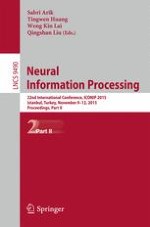2015 | OriginalPaper | Buchkapitel
A New Evolutionary Algorithm for Extracting a Reduced Set of Interesting Association Rules
verfasst von : Mir Md. Jahangir Kabir, Shuxiang Xu, Byeong Ho Kang, Zongyuan Zhao
Erschienen in: Neural Information Processing
Aktivieren Sie unsere intelligente Suche, um passende Fachinhalte oder Patente zu finden.
Wählen Sie Textabschnitte aus um mit Künstlicher Intelligenz passenden Patente zu finden. powered by
Markieren Sie Textabschnitte, um KI-gestützt weitere passende Inhalte zu finden. powered by
